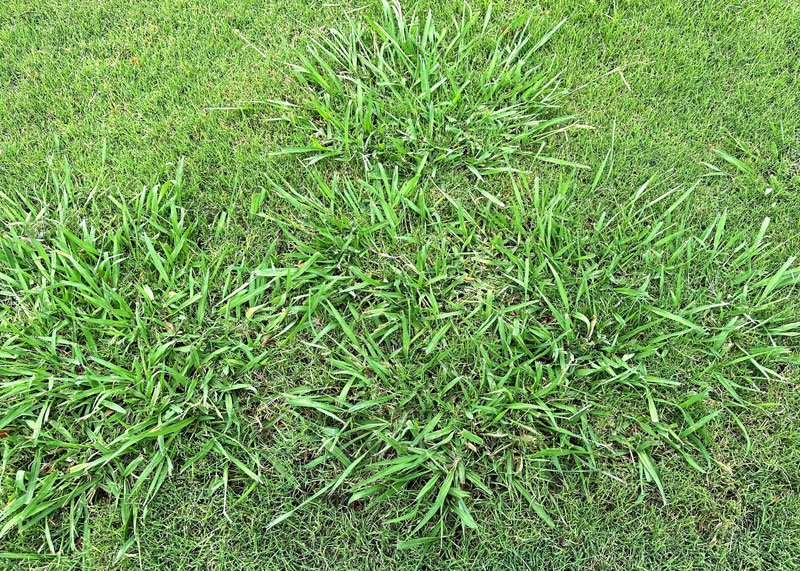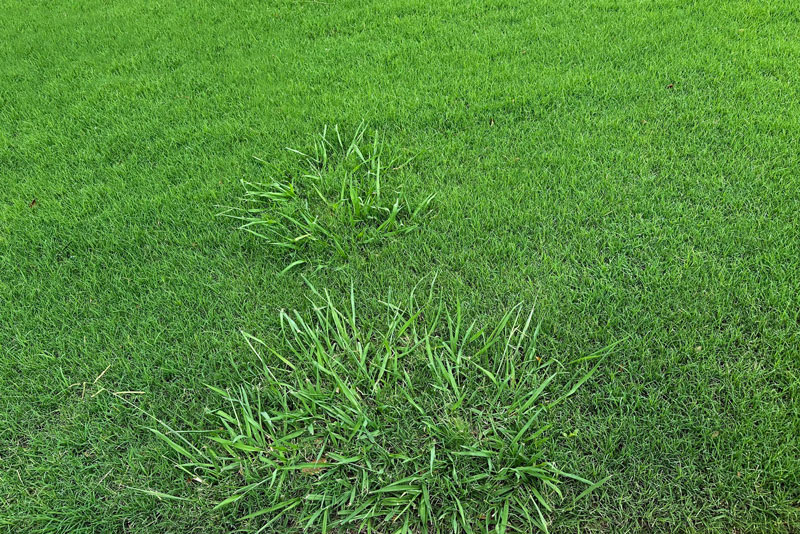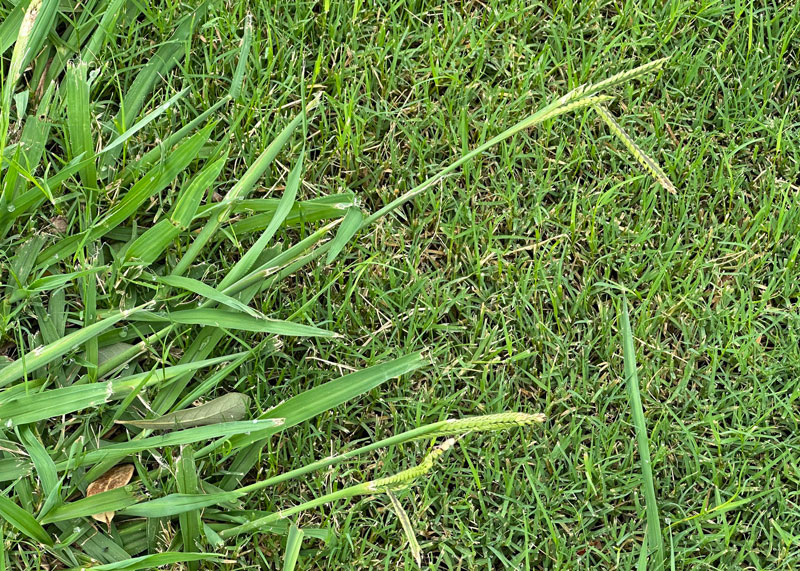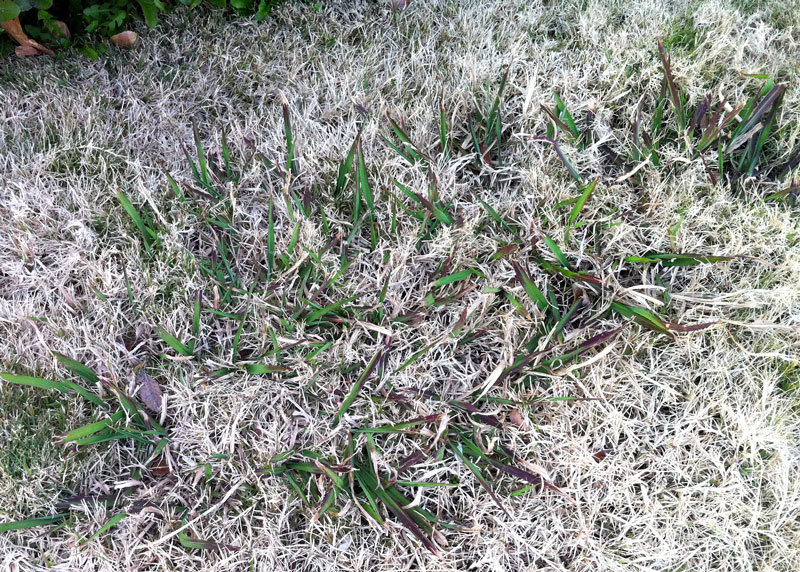Despised dallisgrass
Remember getting all dressed up for that big date. You looked terrific. But on that last pass past the mirror, there it was – a big pimple right on the end of your nose.
Dallisgrass is the pimple of lawn care. It’s big. It’s bold. And it’s really ugly. Worst news of all, it’s probably headed your way – if it’s not there already.
How to identify it…
• It’s a perennial grass. It forms dense clumps, and it comes back each spring from those same clumps. It does not produce runners.
• Its leaves are very dark green. That’s as opposed to the leaves of crabgrass which are medium green. (Crabgrass is also an annual, and it does produce short runners.)
• Dallisgrass has very identifiable seedheads. They appear just a couple of days after mowing, and they resemble old-fashioned telephone poles with cross arms. Each cross arm is filled with BB-sized disks (seeds) with black, peppery specks.
What lawns can it invade?
• Any. When it’s in town, it becomes the boss grass. Even St. Augustine moves over.
How can you control it?
Access to the old standard homeowner product MSMA is very limited now for consumers, so you will probably have to resort to one of the following options.
• Dig the clumps out by hand. Use a sharpshooter spade to remove the entire clump. The roots are very dense, and all must be removed or it will come right back. Replace the soil with clean topsoil to match what was there originally. If the void in the grass is large, dig plugs of sod and plant them into the new soil.
• Spot treat the clumps with a glyphosate-only herbicide with a tank sprayer or a trigger bottle applicator. (Do not use a hose-end sprayer. Their spray patterns are too broad and would damage big parts of your yard.)
Note: The original Roundup products were glyphosate-only, but their formulations have been changed. Shop at a full-service independent nursery or farm supply dealer for an alternative that contains glyphosate as its only active ingredient. The benefit of glyphosate is that it does not leave any residue in the soil.
Another note: A reader sent a great suggestion many years ago. Take a 1-gal. plastic jug (distilled water jug is easier to clean than milk jug!). Cut the bottom out of the jug. Take the lid off the jug and press it down over each clump of dallisgrass as you insert the nozzle of your tank sprayer into the jug to apply the herbicide. That will prevent drift beyond where you want it.
• Alternative way of treating comes in mid-winter. Following an extremely cold spell, when your permanent turf is completely dormant, watch for dallisgrass to green up and start growing before your St. Augustine or bermuda. That may give you a several-day window during which you can spray a glyphosate-only product onto the green dallisgrass blades. However, if you can see any green tissues in the turfgrass runners do not attempt this.
• Apply pre-emergent granules to prevent germination of dallisgrass seeds during the late spring, summer, and fall. No, it won’t do a thing for the existing clumps, but it will help prevent any new outbreaks while you’re out there fighting the old battles.
Did you know…
That dallisgrass has the unique ability to set viable seeds without pollination? Every one of those seeds you see will be able to germinate if allowed to mature on the mother plants. That points out the importance of frequent mowing (5- to 7-day intervals).
It’s also worth noting…
That certified applicators can buy and apply MSMA in certain uses. It’s a shame that we consumers lost it for control of dallisgrass in bermuda turf since it would kill grassy invaders like dallisgrass, crabgrass, grassburs, and even unwanted St. Augustine without harming our bermuda lawns. It does a great job. I just pass that note on for your own edification.





